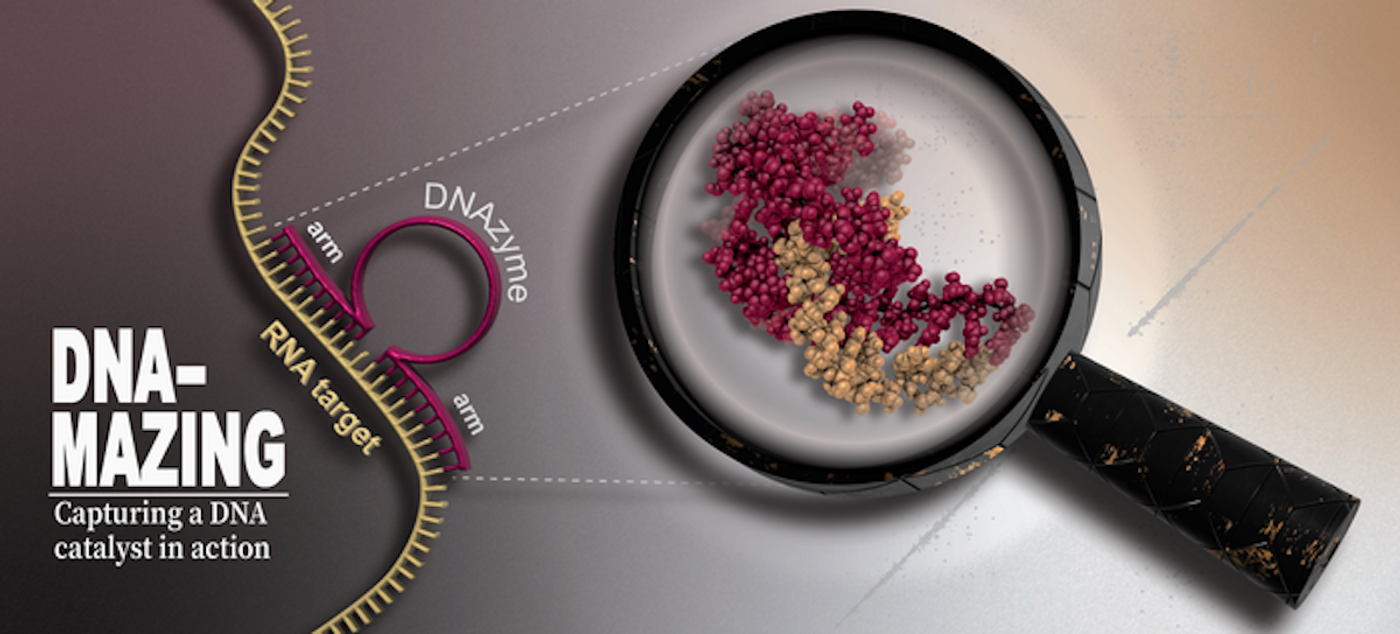DNAzymes: Catalytic DNA Molecules with Therapeutic Potential
Genomic DNA is a huge molecule that is compacted to fit into the nucleus of cells. We know that it holds the genetic information needed to build an organism. But there is more than just genomic DNA. Short sequences of DNA can be used for a variety of different purposes, and some of them can even help trigger biochemical reactions; they might mimic other enzymes, or cause the destruction of RNA. DNAzymes or deoxyribozymes are DNA molecules with catalytic activity, and they are typically made up of about fifteen nucleotide bases, with binding arms of about another ten bases flanking both ends. The central, active sequence stays the same, but the binding arms can be modified and specified so they will target a selected RNA sequence. Researchers have now learned more about how DNAzymes work. The findings have been reported in Nature.
DNAzymes have therapeutic potential because they can be made to only target very specific sequences, such as RNA that is associated with viruses or damaged cells, for example. Healthy RNA would be left alone, in theory. Once bound, the specific DNAzyme can cut its RNA target, and the remnants are quickly degraded by the cell. The SARS-CoV-2 virus that causes COVID-19 is one example of an RNA virus. There are many others. Cancer cells also use messenger RNA (mRNA) to carry out their malignant functions, and their mRNA sequences are often different enough from the mRNA healthy cells to make the cancer cells targetable with DNAzymes.
This great idea hasn't turned out with such great results, however, noted HHU group leader and senior study author Dr. Manuel Etzkorn. DNAzymes can destroy RNA effectively in the laboratory, but "without a fundamental understanding of how they function, it is very difficult to develop improved DNAzyme variants that can accomplish their work in cells." But, he added, this research has provided some new insight.
In this work, the researchers used nuclear magnetic resonance (NMR) spectroscopy to decipher the atomic-level structure of a DNAzyme in several steps it assumed as it attached to an RNA molecule and cleaved it into two parts. The DNAzyme then released the fragments and was able move on to do its work elsewhere.
Magnesium was found to play a cofactor role in the process, but "it binds relatively poorly and only briefly to the DNAzyme," noted lead study author Jan Borggräfe of the Etzkorn lab. "There are other components in the cell with a greater affinity for magnesium that 'steal' the magnesium from the DNAzyme so to speak." This could be why the DNAzymes don't work efficiently inside of cells.
The researchers want to learn how to improve the connection between magnesium and DNAzymes, so that the process will work better in an organism. They are hopeful that the massive therapeutic potential of these molecules can be realized.
A video of the installation of an instrument used in this research can be seen below.
Learn moreabout NMR from this video.










